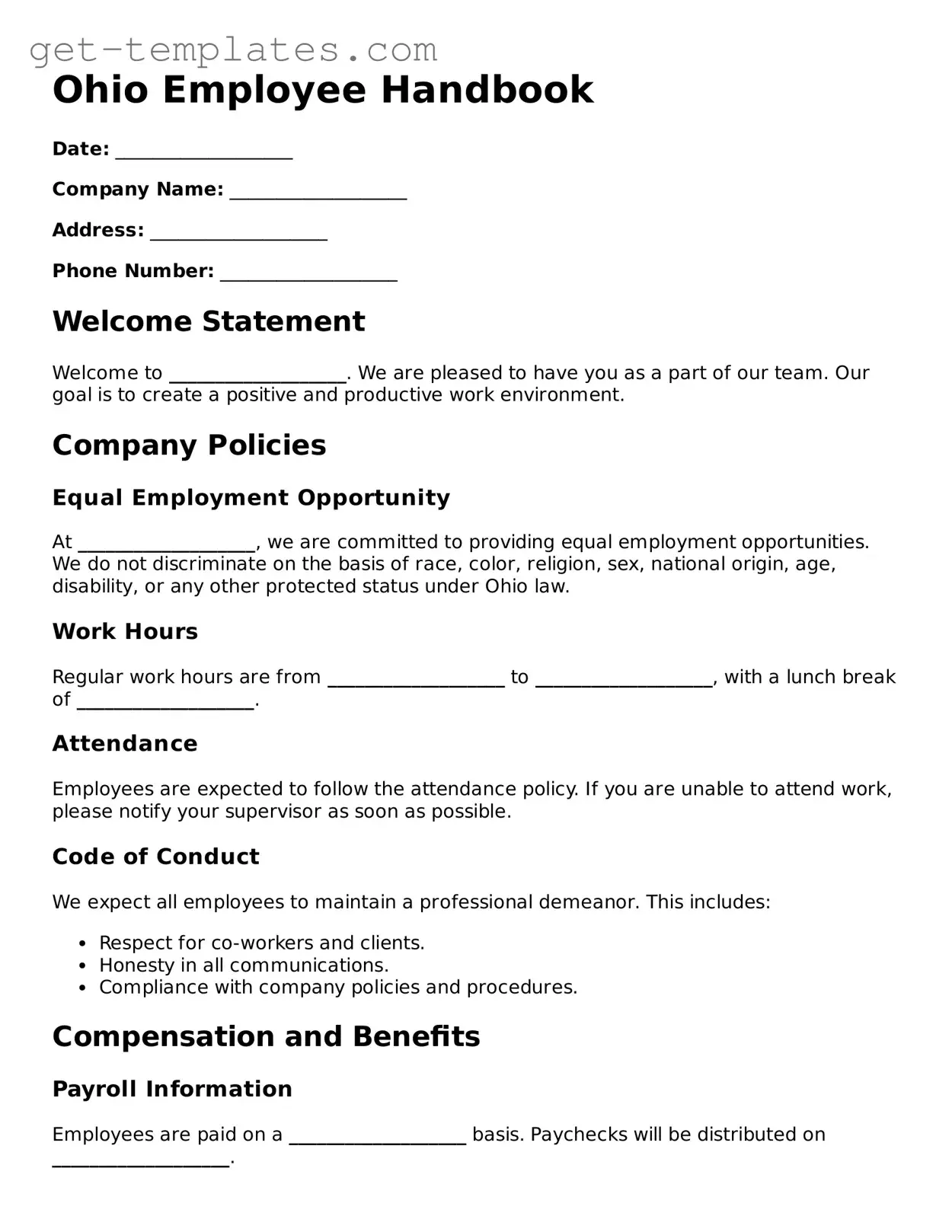Ohio Employee Handbook
Date: ___________________
Company Name: ___________________
Address: ___________________
Phone Number: ___________________
Welcome Statement
Welcome to ___________________. We are pleased to have you as a part of our team. Our goal is to create a positive and productive work environment.
Company Policies
Equal Employment Opportunity
At ___________________, we are committed to providing equal employment opportunities. We do not discriminate on the basis of race, color, religion, sex, national origin, age, disability, or any other protected status under Ohio law.
Work Hours
Regular work hours are from ___________________ to ___________________, with a lunch break of ___________________.
Attendance
Employees are expected to follow the attendance policy. If you are unable to attend work, please notify your supervisor as soon as possible.
Code of Conduct
We expect all employees to maintain a professional demeanor. This includes:
- Respect for co-workers and clients.
- Honesty in all communications.
- Compliance with company policies and procedures.
Compensation and Benefits
Payroll Information
Employees are paid on a ___________________ basis. Paychecks will be distributed on ___________________.
Health Insurance
Our health benefits include:
- Medical insurance.
- Dental insurance.
- Vision coverage.
Leave Policies
Vacation Leave
Employees are eligible for vacation after ___________________ months of employment. Vacation days may accumulate up to ___________________.
Sick Leave
Employees are entitled to ___________________ days of sick leave annually.
Termination Policy
Termination can be voluntary or involuntary. An exit interview will be conducted to gather feedback.
Acknowledgment of Receipt
I have received and read the employee handbook for ___________________. I understand the policies outlined within.
Employee Signature: ________________________
Date: ___________________
